Grafting for the Future
If you look around the cemetery you will see numerous trees with a distinct scar or swelling around the bottom of the trunk. Have you ever wondered what that was? More than likely, this is a grafted tree. Grafting is the widespread practice of joining two or more plants together to improve or preserve desirable characteristics. Sometimes trees and shrubs express a natural occurring characteristic that is attractive or unusual which growers would like to reproduce. The easiest way to do this is to take a cutting of the desired trait, a scion, and join it with another tree of the same species known as an understock or rootstock.
There are many reasons to graft plants. One is to preserve history. The Prince of Wales beech tree, which stands in front of Bigelow Chapel, was planted in 1860 by King Edward the VII of England. The current tree (pictured above) was grafted by Jack Alexander, the former propagator for the Arnold Arboretum, many years prior to the original trees removal in 2008. He produced six trees by grafting scions from the original tree onto understock of Fagus sylvatica or European beech.
One of these trees was planted in place of the original shortly after its removal due to a vascular disease known as Phytophthora, a soil dwelling fungus that is taking its toll on many of our older beech trees in the cemetery. It’s nearly impossible to remove the pathogen from the soil which puts the Prince of Wales tree at risk for reinfection. Last winter I grafted scions from Jack’s tree and we now have three copies growing in the greenhouse nursery. The grafted trees carry the exact genes of the Prince of Wales beech and are essentially clones of the same tree.
A second project the greenhouse department has been working on is the preservation of a very old sugar maple from Lowell Memorial Park in Cambridge. This is a team effort initiated by Martha Stearns and Elizabeth Bierer of the Cambridge Plant & Garden Club with the main goal of growing a replacement tree for the ailing one. This tree is being conserved primarily due to its age which is believed to be over two hundred years old. It’s a powerful experience to place your hand on something that may have been touched by George Washington, Paul Revere, or Longfellow. Old trees, also known as “witness trees”, are being preserved more and more these days. They are a physical connection of our past with the present, an aspect that would be forever lost should we allow the tree to disappear.
Another benefit of grafting is to reproduce plants which are difficult to find in the nursery trade. We have two examples you can find at the greenhouse. They are Abies mariesii and Tsuga mertensiania ‘Mount Hood’. Abies mariesii, or Maries’ fir, is native to the island of Japan and is found in the northern mountains of Honshu. Mount Auburn has only one of these trees and it’s unable to reproduce by seed without another tree. The nearest Maries’ fir resides at the Arnold Arboretum and it is logistically impractical to hand pollinate them. Last winter, Jack and I each grafted and exchanged trees which will introduce new genetic material to both Mount Auburn and the Arnold Arboretum with hope the two trees will pollinate each other in the future.
Tsuga mertensiana ‘Mount Hood’ is a variety of western hemlock that exhibits a striking blue coloration and beautiful slender, compact growth. Mount Auburn has just one that you can find growing along the southwest corner of Story Chapel. The department successfully grafted one last year and have another seven under way in the bulb cellar of the greenhouse which were started this year.
On January 5th we hosted our first grafting demonstration and invited Jack Alexander to help. This was a private function for the Cambridge Garden Club which lasted about two hours and was attended by 13 members. We spent the morning grafting umbrella beech trees in a warm head house while the chilly winter winds blew outside. Jack and I demonstrated various types of grafting techniques such as the cleft graft, side graft, and the side veneer graft. The ladies all took a hand at wielding the grafting knife and did quite well for their first attempt. While they grafted, I described how the principal goal was to make corresponding wounds to the vascular cambium on both the scion and understock and align them so the wound would heal and callus together as one, thus enabling the scion to grow and flourish.
After wrapping the wound with elastics and grafting tape, we took the newly grafted trees down into the bulb cellar and placed them on a callus pipe which is merely an insulated PVC pipe with a thermostatically controlled heating element inside of it. Slits in the pipe direct warm air onto the graft union to initiate better healing while the rest of the plant remains in a dormant state in the cool bulb cellar. Keeping the cellar cool and dark reduces the chance of root and bud growth while the heat encourages wound healing. After three weeks on the callus pipe we removed the trees from the heat and let them rest in the bulb cellar until spring.
Later that same day, we were fortunate to have David Dusenbury, the superintendent of The Walter Hunnewell Estate in Wellesley, provide cuttings from one of the yews growing on the property, which leads us to a third reason to graft plants, preserving a new genetic variation. David’s eye was caught one day by a golden sprout growing off an otherwise green yew. The striking gold color appears to be a new variation of Taxus x media or spreading yew. We grafted several plants that afternoon and David was kind enough to leave several for the cemetery to grow and enjoy. With a little time and patients, we may be seeing a few Wellesley Gold yews and other plants around the cemetery as we continue to graft for the future.
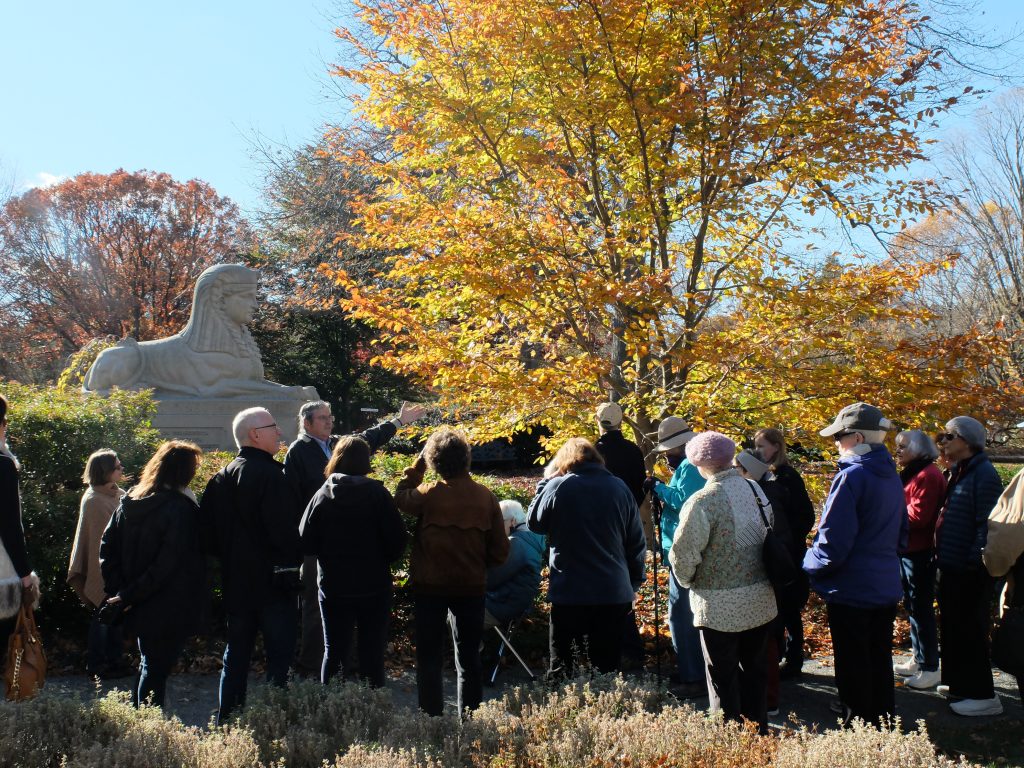
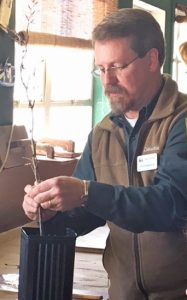
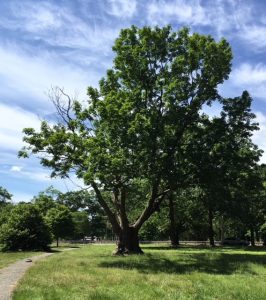

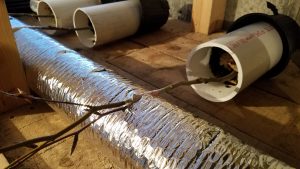
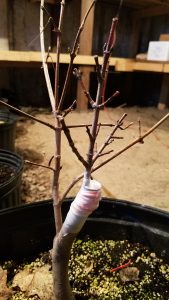
Leave a Reply to Rev Dr Tom Cancel reply